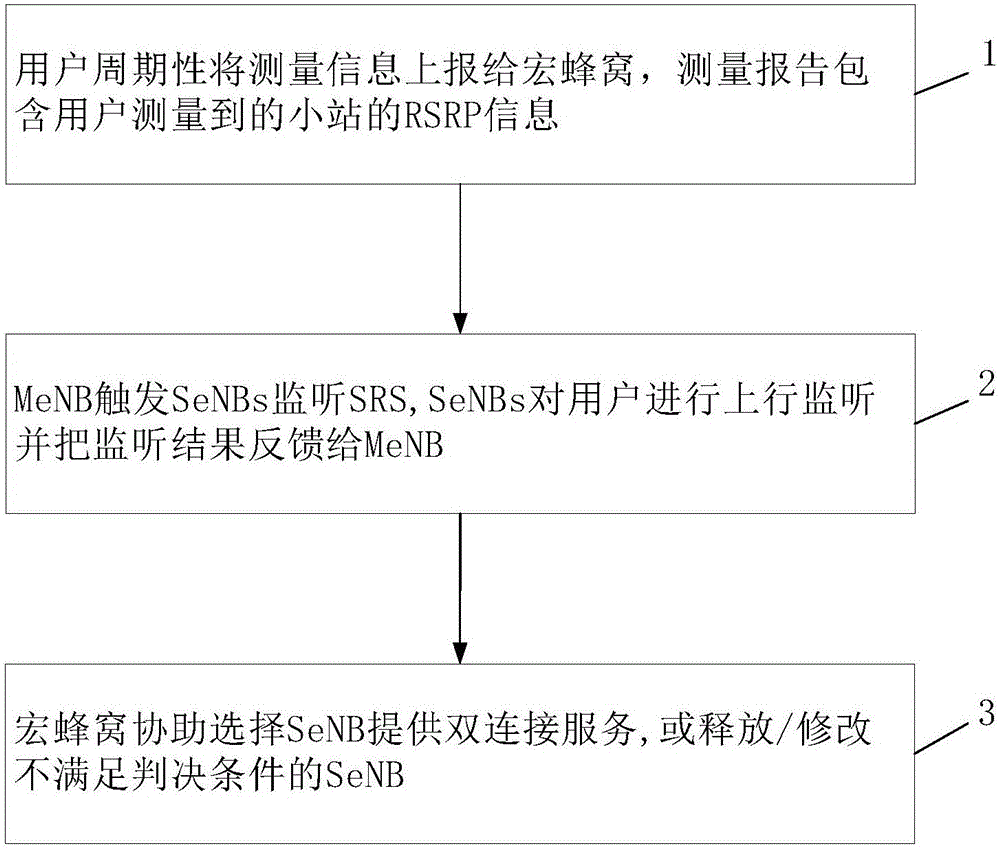Mobility enhancement scheme based on double-connection design for 5G user-centric network
A mobility, dual-connection technology, applied in the field of user mobility research, can solve problems such as power imbalance, increased handover failure rate, and increased coordination delay between macro base station and small base station, so as to reduce interference and enhance mobility. Effect
- Summary
- Abstract
- Description
- Claims
- Application Information
AI Technical Summary
Problems solved by technology
Method used
Image
Examples
Embodiment Construction
[0020] The implementation cases of the present invention are described in detail in conjunction with the accompanying drawings.
[0021] The present invention is mainly applied in a heterogeneous network where dense small stations are deployed, that is, a large number of small stations are deployed in an LTE network. Usually, consider the situation that multiple small stations are distributed within the coverage area of a single macro base station, and the positions of the small stations are random. Considering the actual application, the dense distribution of small stations mostly occurs in places with large traffic and business needs, such as dense blocks.
[0022] attached figure 1 It is the system architecture and scenario of the example application. In the dense scenario of small cells, we divide the network into two layers. The first layer is that the macro cell obtains data from the core network to provide coverage. The second layer is composed of Small Cell, which ...
PUM
 Login to View More
Login to View More Abstract
Description
Claims
Application Information
 Login to View More
Login to View More - R&D
- Intellectual Property
- Life Sciences
- Materials
- Tech Scout
- Unparalleled Data Quality
- Higher Quality Content
- 60% Fewer Hallucinations
Browse by: Latest US Patents, China's latest patents, Technical Efficacy Thesaurus, Application Domain, Technology Topic, Popular Technical Reports.
© 2025 PatSnap. All rights reserved.Legal|Privacy policy|Modern Slavery Act Transparency Statement|Sitemap|About US| Contact US: help@patsnap.com



